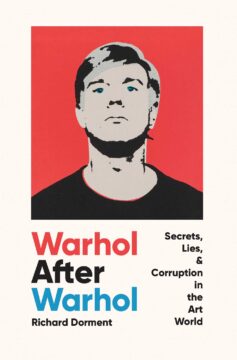Peter Conrad at The Guardian:
 Andy Warhol began his career by mocking the notion of art’s sanctimonious status and elevated value. He recycled grubby tabloid headlines, mimicked the mass-produced stock in supermarkets, and called his industrially busy studio the Factory. His witty sabotage was only too successful: art enabled him to magically conjure up money, and when he died in 1987 he left an estate worth $220m.
Andy Warhol began his career by mocking the notion of art’s sanctimonious status and elevated value. He recycled grubby tabloid headlines, mimicked the mass-produced stock in supermarkets, and called his industrially busy studio the Factory. His witty sabotage was only too successful: art enabled him to magically conjure up money, and when he died in 1987 he left an estate worth $220m.
After Warhol’s death, a foundation set up in his name vowed to redistribute this wealth to needy artists as well as subsidising a reliable catalogue of his work; an authentication board was established to protect the market from proliferating fakes. The board’s judgments were issued by fiat, and in 2001 its experts ruled that a silk-screened self-portrait, which the American collector Joe Simon (also known as Joe Simon-Whelan) hoped to resell for $2m, had not been made by Warhol, even though it was stamped with his signature and inscribed by his business manager.
more here.
